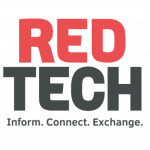KUALA LUMPUR, Malaysia — In the fast-paced world of radio broadcasting, technological advancements have significantly transformed how radio presenters operate. Yet, despite these changes, one critical component of the radio studio has stubbornly resisted modernization: the radio console. For decades, the traditional radio console has been a fixture in broadcast studios, housing numerous faders, switches and knobs necessary for managing audio inputs and outputs. However, in an era where digital technology offers far more streamlined solutions, their persistence appears increasingly anachronistic.
The advent of digital audio, cloud storage and internet broadcasting has diminished the need for physical, space-consuming equipment. Announcers can access vast audio libraries with the click of a button, edit files on the fly using software, and broadcast remotely from anywhere. This digital transformation has enhanced the quality and efficiency of radio production, while providing greater flexibility in content creation and distribution.
Small independent creators can now compete with established radio stations using minimal equipment and a simple internet connection. These disruptors underscore the need for traditional studios to reassess their entrenched hardware practices and adopt streamlined, future-proof solutions.
However, consoles reminiscent of a bygone era still prevail. Cumbersome metal decks with numerous physical controls remain rooted in many studios. One of the primary reasons is inertia. Many broadcasters, familiar with traditional consoles, have been slow to adopt newer technologies. There is also a perception that larger equipment equates to better quality and reliability. However, this overlooks the vast potential of software-driven solutions that offer the same, if not greater, functionality without the bulk.
Pressure is increasing on console manufacturers to employ principles driving other technological advancements in broadcasting, such as flexibility, efficiency and adaptability.
Software-driven future
Software-based audio consoles can run on standard computers or tablets, significantly reducing the need for physical hardware. These virtual consoles offer the functionality of traditional equipment with the benefits of easier updates, customization and remote access.
Modular console designs enable broadcasters to tailor setups. Studios can add or remove components as necessary, ensuring the technology remains relevant and scalable. Modular systems not only reduce costs and space requirements but also offer upgrade paths that minimize obsolescence, thereby extending the lifecycle and ROI.
Pressure is increasing on console manufacturers to employ principles driving other technological advancements in broadcasting, such as flexibility, efficiency and adaptability. This transition will require a mindset shift and a willingness to invest in new technologies. However, the potential benefits far outweigh the drawbacks.
The radio industry stands at a crossroads — one foot in the digital age, the other lingering in the analog past. It’s time for radio console manufacturers to consider strategies to help shape the industry’s future.
Strategies for radio console manufacturers
1. Promote the benefits of software-driven solutions
Highlight benefits of virtual consoles, including flexibility, cost efficiency and remote access. Emphasize how customizable interfaces allow personalized layouts, macros and seamless integration with other software applications. Software-driven solutions enable remote production and collaboration, enhancing operational efficiency and flexibility. Their smaller hardware footprint also lowers maintenance costs and energy consumption.
2. Develop modular console designs
Promote the widespread adoption and scaling of modular console designs that enable studios to tailor their setups. Focus on modular components that can be easily added, removed, or rearranged as needed. This modularity ensures that low-budget broadcasters can incrementally scale up their production capabilities without complete system overhauls.
3. Industry-wide standardization initiatives
Establish comprehensive industry standards for digital console interfaces and functionality to reduce barriers to new technology adoption and provide broadcasters with a clear roadmap for upgrading. Define standard control protocols, data exchange formats and metadata standards to ensure consistency across systems. Advocate for the adoption of open standards, such as AES67, Ravenna and Dante, for audio networking, enabling seamless interoperability between devices and systems. Address potential compatibility challenges and offer support for legacy systems, ensuring a smooth and efficient transition.
4. Shift perceptions through demonstrations
Organize live demonstrations and case studies to showcase how software-driven or virtual digital consoles match or even surpass the reliability and quality of traditional consoles. These efforts will help challenge the perception that traditional consoles are inherently superior. Address common concerns about latency, reliability and the learning curve associated with new technologies by offering comprehensive training and support. Additionally, create user groups and forums to foster knowledge sharing, address technical challenges and build a supportive community of users.
Implementing these strategies and addressing the concerns of broadcasters will accelerate the adoption of modern, software-driven console solutions. More than just a technological upgrade, this represents a redefinition of agility, sustainability and future-readiness in audio broadcasting.
The author is a radio engineering and technology consultant.
This story originally appeared in the July/August 2025 edition of RedTech Magazine.
These stories might interest you
How station innovators are winning with virtual mixing
Radiogroep networks in radio school
CH Media spearheads Switzerland’s digital radio transformation

